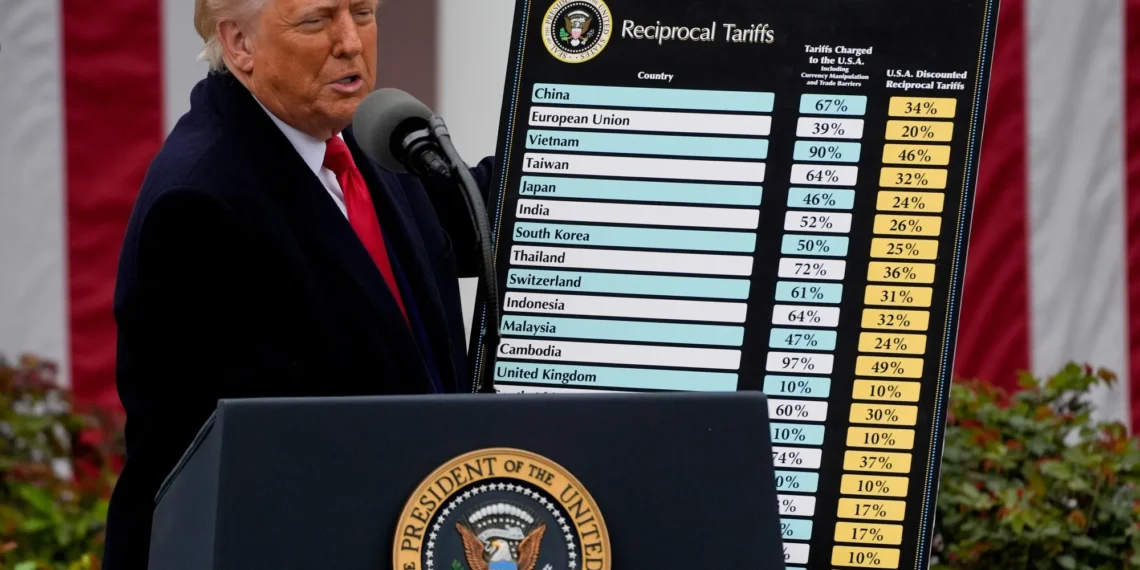In recent years, few economic policies have sparked as much debate as the Trump tariffs. Enacted during Donald Trump’s presidency, these trade barriers aimed to realign America’s trade relationships and revive domestic manufacturing. But the effects of these tariffs have rippled far beyond U.S. borders, influencing global trade dynamics, consumer prices, and diplomatic ties. This article delves into the historical context, motives, and outcomes of Trump’s tariff strategy while exploring its lasting implications for global commerce.
What Are Tariffs and Why Do They Matter?
Understanding the Basics of Tariffs
Tariffs are taxes imposed by a government on imported goods. Their primary purpose is to make foreign products more expensive, thereby encouraging consumers to buy domestically-produced goods. Tariffs can serve various strategic objectives, including:
-
Protecting local industries
-
Reducing trade deficits
-
Responding to unfair trade practices
However, they can also provoke retaliatory measures and inadvertently raise prices for consumers and businesses.
The Trump Tariffs Strategy: A Bold Shift in U.S. Trade Policy
Breaking from Tradition
Before Donald Trump, most U.S. presidents favored free trade policies, seeking multilateral agreements and lower trade barriers. Trump’s approach marked a significant departure. He argued that America’s global trade partners—particularly China—were taking advantage of lopsided trade deals, leading to job losses and deindustrialization in the U.S.
Key Components of the Trump Tariffs
The Trump tariffs primarily targeted imports from China but also included products from the European Union, Canada, Mexico, and others. Key areas of focus included:
-
Steel and aluminum imports: In 2018, the U.S. imposed a 25% tariff on steel and a 10% tariff on aluminum under Section 232 of the Trade Expansion Act, citing national security concerns.
-
Chinese goods: The most notable tariffs came under Section 301 of the Trade Act of 1974, targeting $360 billion worth of Chinese imports in response to alleged intellectual property theft and unfair trade practices.
-
Global auto imports: Though never fully implemented, Trump threatened tariffs on auto imports from Europe and Japan, aiming to force renegotiations.
Economic Impact of Trump Tariffs
Domestic Manufacturing and Employment
One of the main goals of the Trump tariffs was to revitalize American manufacturing. Initially, some U.S. producers benefited from reduced competition. Steel and aluminum manufacturers, for example, saw a brief rise in demand and prices.
However, the long-term picture was more complex:
-
Manufacturing job growth plateaued: After a short spike in early 2018, employment gains in manufacturing slowed and eventually declined.
-
Rising input costs: U.S. companies reliant on imported raw materials, like auto and appliance manufacturers, faced higher production costs, squeezing profit margins and leading to layoffs in some sectors.
Consumer Prices and Inflation
Tariffs ultimately function as a tax on imports, and these costs are often passed on to consumers. Studies estimate that American households paid hundreds of dollars more annually due to higher prices on everything from electronics to groceries.
Trade Deficits and Agricultural Impact
Despite efforts to reduce the U.S. trade deficit, it actually widened during the Trump administration. Meanwhile, retaliatory tariffs—especially from China—hit American farmers hard. U.S. agricultural exports dropped significantly, prompting the government to issue over $28 billion in aid to affected farmers.
International Reactions and Retaliation
China’s Response
China responded to U.S. tariffs with its own set of retaliatory tariffs, targeting American agricultural products, automobiles, and industrial goods. This escalated into a full-blown trade war that disrupted global supply chains and led to economic uncertainty.
The European Union and Canada
Key U.S. allies were also caught in the crossfire. The EU and Canada imposed retaliatory tariffs on American products like whiskey, motorcycles, and orange juice. These actions strained long-standing diplomatic relationships and led to volatile market reactions.
The WTO’s Involvement
Several countries filed complaints with the World Trade Organization (WTO), challenging the legality of the Trump tariffs. In 2020, the WTO ruled that the tariffs on Chinese goods violated international trade rules. While the U.S. contested the ruling, it underscored growing tensions between America and the global trade framework.
Trump Tariffs: A Mixed Bag for American Businesses
Winners
-
U.S. steel and aluminum producers: Benefited from reduced competition and higher prices—at least initially.
-
Some niche manufacturers: Smaller American firms producing specialized goods saw a temporary boost in demand.
-
Trade lawyers and consultants: The complexity of new regulations created a surge in demand for advisory services.
Losers
-
Exporters and farmers: Suffered from retaliatory tariffs, losing market access and revenue.
-
Retailers and consumers: Faced higher costs for everyday goods, from washing machines to smartphones.
-
Small and medium-sized enterprises (SMEs): Lacked the financial flexibility to absorb sudden tariff-related expenses.
Trump Tariffs and the U.S.-China Trade Deal
In early 2020, the U.S. and China signed Phase One of a trade agreement. China agreed to increase purchases of U.S. goods and services by $200 billion over two years and implement stronger intellectual property protections. In return, the U.S. paused additional tariffs and rolled back some existing ones.
However, the COVID-19 pandemic disrupted supply chains and delayed implementation. By the end of 2021, China had not met its purchasing targets, and skepticism remained about the deal’s long-term effectiveness.
The Biden Administration’s Stance
President Joe Biden retained many of the Trump tariffs, signaling a continuity in tough-on-China policy. However, his administration also expressed interest in more multilateral engagement and reforming the WTO.
Notably:
-
Some tariff exclusions were reinstated for essential imports.
-
New trade partnerships, like the Indo-Pacific Economic Framework (IPEF), were initiated to counterbalance China’s influence.
Biden’s approach suggests a more measured but still protectionist policy stance, focused on supply chain resilience and national security.
The Global Ripple Effects
The Trump tariffs didn’t just affect the U.S. and China. They:
-
Encouraged trade diversion: Countries sought alternative trade partners to bypass tariffs.
-
Spurred nationalism: Other nations adopted similar protectionist policies.
-
Accelerated reshoring trends: Some businesses began relocating supply chains closer to home to avoid future disruptions.
These shifts have prompted a reevaluation of globalization and raised questions about the future of free trade.
Trump Tariffs: Analyzing the Long-Term Legacy
Did the Trump Tariffs Achieve Their Goals?
The answer is nuanced. While the tariffs did highlight genuine issues—like intellectual property theft and global trade imbalances—their effectiveness remains questionable. They failed to significantly reduce the trade deficit, hurt key domestic industries, and triggered global retaliation.
Yet, the tariffs succeeded in one major respect: they permanently changed the discourse around trade policy in the United States. Politicians across the spectrum now discuss the strategic importance of manufacturing, reshoring, and reducing dependence on geopolitical rivals.
Ongoing Debates
Critics argue that the Trump tariffs amounted to a self-inflicted wound, straining the economy without yielding meaningful reform. Proponents claim they were a necessary shock to wake up the world—and America—to the costs of unchecked globalization.
Either way, the long-term trajectory of U.S. trade policy will continue to bear the imprint of the Trump era.
Conclusion
The Trump tariffs marked a pivotal moment in modern economic history. They disrupted long-standing trade relationships, redefined U.S. policy priorities, and forced nations and businesses to reconsider their positions in a rapidly changing global market. While the immediate economic outcomes were mixed, the broader strategic implications continue to evolve.
In a world where economic resilience and national security are increasingly intertwined, tariffs and trade policy will remain central to global politics. Whether future leaders adopt or abandon the Trump-era playbook, one thing is clear: the age of unchallenged free trade is over.
As the global economy grapples with new challenges—pandemics, geopolitical conflicts, and technological upheaval—the legacy of Trump tariffs serves as a reminder of how quickly the rules of the game can change.








